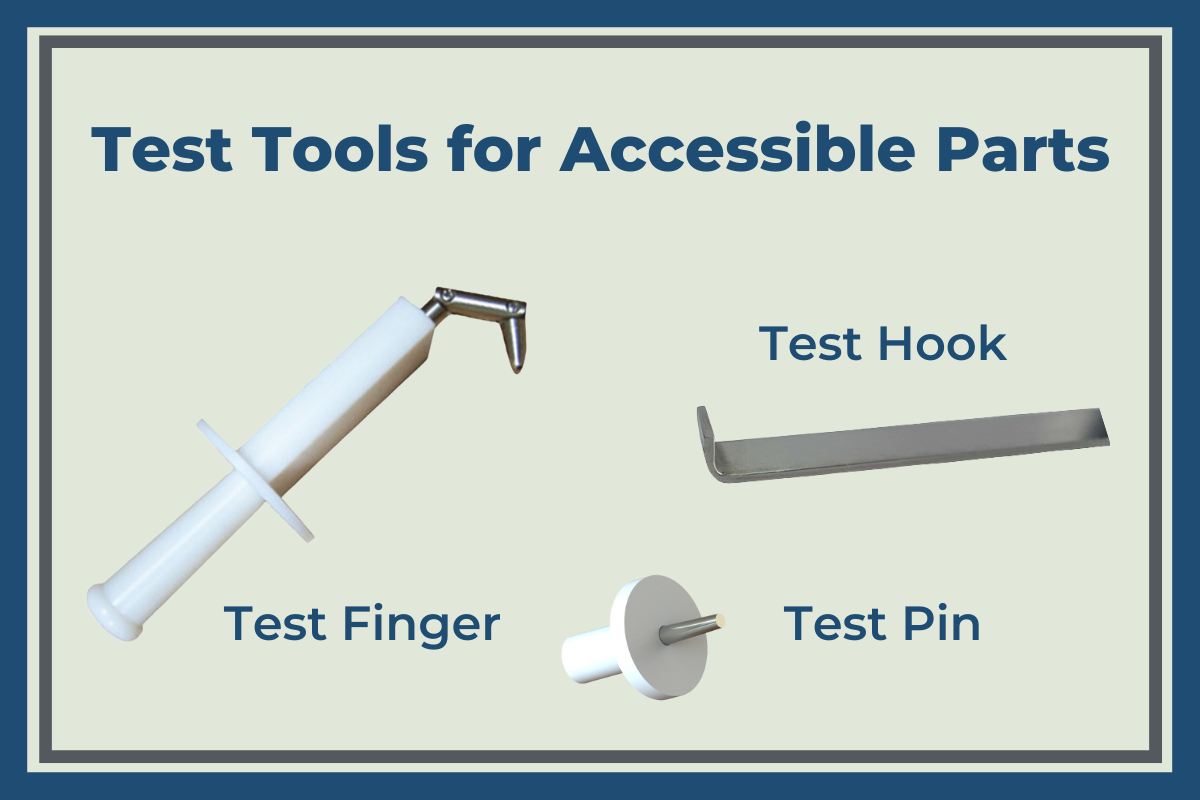Touchable Parts in Medical Devices
When designing medical devices, the EN 60601-1 standard sets different protection requirements for the areas of the device that can be touched and those that cannot. This makes sense, as the touchable areas pose a risk of harm from electricity or heat to patients and medical device operators.
To comply with EN 60601-1, first, you need to determine if a part of the medical device (or “Medical Electrical Equipment“) is accessible according to the standard, and then you need to test those parts to make sure they meet the protection requirements.
Is the Part Accessible?
There are areas on a medical device that could be touched by a hand, toe, nose, elbow, etc. during normal use. They could even be touched by a beak or tail, since a patient is defined as a “living being (person or animal) undergoing a medical surgical, or dental procedure.” That’s a lot of different possible sizes and shapes. To clarify, EN 60601-1 calls for standardized testing parameters – can a finger touch the part?
EN 60601-1 defines the areas (called Accessibly Parts and Applied Parts) as those areas that can be touched using the standard test finger during normal use. “Normal use” includes opening access covers and removing parts like lamps, fuses, and fuse holders. With those removed, parts inside may also be considered Accessible Parts.
What Are the Accessibility Test Tools?
Accessible Parts need to be tested for safety compliance, which is an inherently risky task when you use your finger. Since medical devices are supposed to heal, not harm, EN 60601-1 calls for inspection and using standardized test tools, not an actual finger. (To the relief, no doubt, of testing technicians everywhere.)
The accessibility test tools are probes designed to simulate the action of a “typical” finger in a touchable area, testing for both access and the pressure a finger might exert.
Test Fingers
A standard test finger is a tool of specific dimensions, usually made of heat-treated steel with a non-conductive handle and a stop plate, used to simulate a finger touch. The standard test finger has joints so that it may be “applied in a bent or straight position,” much like an actual finger could move.
The straight, unjointed test finger is similar but without the joints. It is used when a test calls for applying some pressure.
Test Hooks
A test hook is a metal bar with a 90º bend in it. It is inserted into an edge or slit of the device enclosure and then pulled with a specified pressure. Used in combination with a test finger, it simulates a hand pulling open a panel in the device and then touching the exposed areas.
Test Pins and Test Rods
Test pins and test rods are metal pins or rods with a handle of specific dimensions. Inserted through openings in the device enclosure “in every possible position,” they are used to assess whether some internal components would be classified as Accessible Parts. They are also used for safety compliance testing for characteristics like creepage distance and air clearance measurements. The test pin is used to probe with minimum force, while the test rod probes with a force of 10 N.
What Hazards do Test Probes Check for in 60601-1?
EN 60601-1 calls for Accessible Parts safety compliance to be “checked by inspection and test as required.” The test finger and other probes are used to test for:
Electrical Hazards
The probes are used to test that device enclosures or barriers can prevent contact with internal, electrically hazardous parts.
This could include internal parts (other than plugs, connectors, and socket-outlets) that can be touched by the test pin or rod when inserted through openings in the enclosure. For example, flexible cords that connect various parts of the device must still comply with voltage, current, or energy requirements if they become loosened or broken. In some instances, electrical connectors on patient leads or cables could be mechanically tested using pressure from an unjointed test finger to check the strength of the insulating material.
Creepage Distances and Air Clearances Measurements
A test finger or other test probe can be used to measure creepage distances and air clearances through enclosure slots or openings. If necessary, a force of a specified value is applied using the tip of the test finger.
It is vital that the safety of a medical device, particularly its touchable parts, be proven before it can go to market. Follow the EN 60601-1 standard for defining which parts are touchable and how to test them safely.
________________________
RAM medical power supplies have 2 x MOPP protection and meet all the touch standards in 60601-1. Contact us for details.
